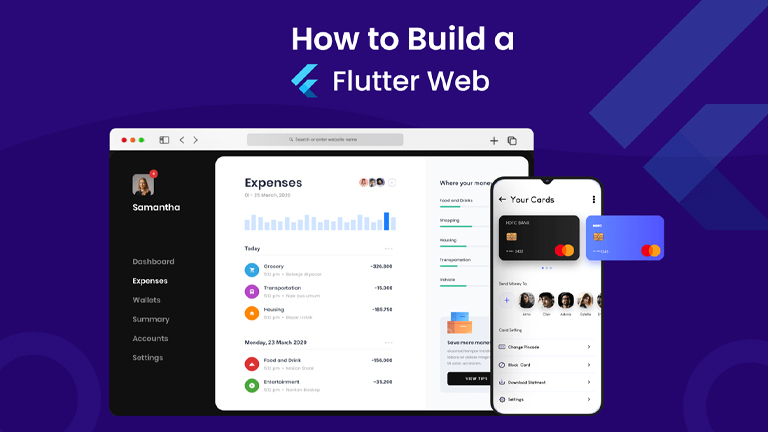The digital era demands developers to create applications that are not just fast and responsive but also work seamlessly across platforms. Flutter, Google’s UI toolkit, has revolutionized cross-platform app development, and its capabilities for building stunning web applications are unmatched. Our Flutter Web course is designed to help you master this cutting-edge framework, empowering you to build modern, interactive, and high-performance web applications. Whether you’re an aspiring developer or an experienced coder, this course will provide you with the skills, tools, and confidence to excel in Flutter for Web development.

Why Choose Flutter for Web Development?
Flutter has gained immense popularity for its ability to craft beautiful user interfaces with a single codebase. With Flutter Web, you can take this capability to the browser, enabling developers to build interactive web applications that rival native app performance.
Key reasons to learn Flutter Web:
- Cross-Platform Efficiency: Write once, deploy everywhere—web, mobile, and desktop.
- Rich UI Design: Leverage customizable widgets to create stunning user experiences.
- High Performance: Deliver blazing-fast web applications.
- Open-Source Ecosystem: Access a vast library of community-supported packages and tools.
Mastering Flutter for Web opens doors to diverse career opportunities as businesses increasingly seek developers skilled in creating versatile web apps.
What You’ll Learn?
Our comprehensive course takes you from the fundamentals to advanced topics in Flutter for Web development. Here’s a sneak peek at the syllabus:
1. Getting Started with Flutter Web
- Setting up your Flutter environment for web development.
- Understanding the core architecture of Flutter.
- Differences between Flutter for Web and mobile platforms.
2. Building Blocks of Flutter Web
- Mastering widgets for responsive web design.
- Layouts, animations, and state management fundamentals.
- Designing adaptive web applications.
3. State Management
- Exploring Provider, Riverpod, and Bloc for efficient state handling.
- Building scalable and maintainable web applications.
4. Flutter Web Routing
- Navigating between pages with Flutter’s routing system.
- Managing deep linking and URL navigation.
5. Web APIs and Data Integration
- Fetching and displaying data from RESTful APIs.
- Implementing real-time updates with WebSockets.
6. Performance Optimization
- Minimizing app load time with lazy loading.
- Enhancing app speed through best practices and caching techniques.
7. Deployment and Maintenance
- Hosting Flutter Web apps on Firebase, AWS, or custom servers.
- Debugging, testing, and maintaining your app post-deployment.
